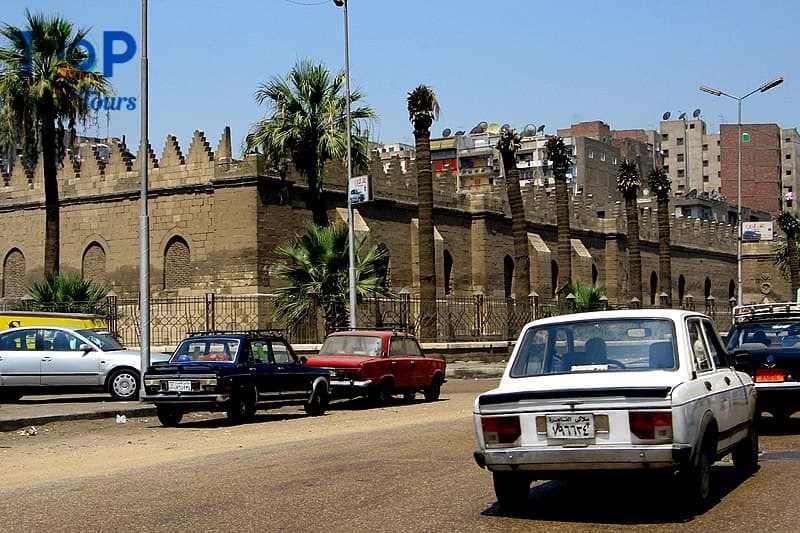Layout of the Mosque
Mosque of al-Zahir Baybars is a square-shaped, hypostyle mosque, with a central courtyard surrounded by four iwans (prayer halls). The iwans are covered by domes, and the courtyard is surrounded by arcades. The main entrance to the mosque is located on the north side of the courtyard.
The qibla wall, which faces the direction of Mecca, is located on the south side of the courtyard. The mihrab, a niche in the qibla wall that indicates the direction of prayer, is located in the center of the qibla wall.
In this article, we will uncover for you the mosque of al-Zahir Baybars with Top Ten Egypt
Architectural Features of Mosque of al-Zahir Baybars
The Mosque of al-Zahir Baybars is notable for its massive size and its elaborate decoration. The mosque is built of red brick and is decorated with a variety of intricate carvings and inscriptions. The walls and ceilings are covered with geometric patterns and calligraphy. The mosque also has a number of stained glass windows.
One of the most distinctive features of the mosque is its minarets. The mosque has four minarets, one at each corner of the courtyard. The minarets are tall and slender, and they are decorated with a variety of geometric patterns and calligraphy.
Historical Significance of the Mosque
Jami’ al-Sultan al-Zahir Baybars al-Bunduqdari is one of the most important mosques in Cairo. It is a testament to the wealth and power of the Mamluks, and it is a symbol of their cultural and architectural achievements.
The mosque was built during a period of great prosperity for the Mamluks. Sultan al-Zahir Baybars was a powerful and ambitious ruler, and he wanted to build a mosque that would reflect his status and power. The mosque is one of the largest and most impressive mosques in Cairo, and it is a testament to Baybars’ success as a ruler.
Preservation and Restoration of the Mosque
Jami’ al-Sultan al-Zahir Baybars al-Bunduqdari has been restored several times over the centuries. The most recent restoration project was completed in 2012. The project involved repairing damage to the mosque’s structure and decoration.
The mosque is still in use today, and it is a popular destination for both worshippers and tourists. Visitors to the mosque can admire its architecture and decoration, and learn about its history and significance.
Conclusion
The Mosque of al-Zahir Baybars is a beautiful and important example of Mamluk architecture. It is a place of worship for Muslims, but it is also a popular tourist destination. Visitors to the mosque can admire the mosque’s architecture and decoration, and learn about the mosque’s history and significance.
Finally, You can visit it through a Cairo Day Tour to Non-Touristic Mosques in Cairo.



Comment (0)